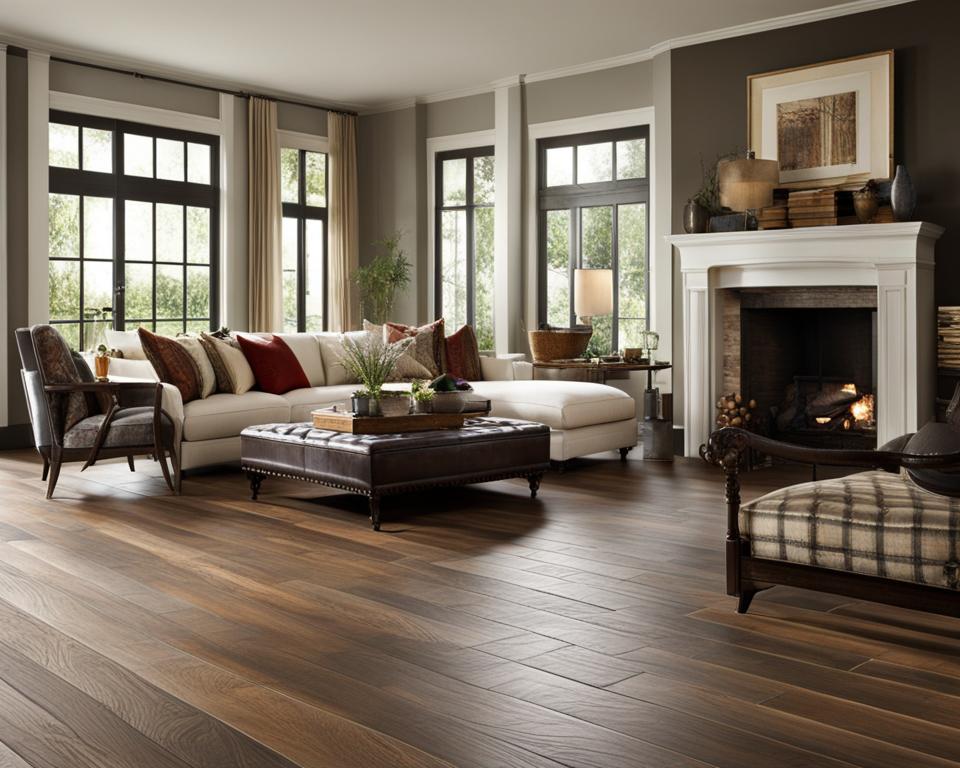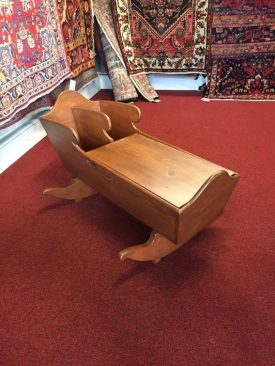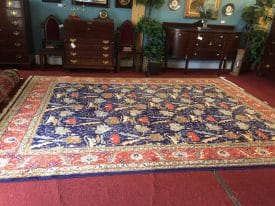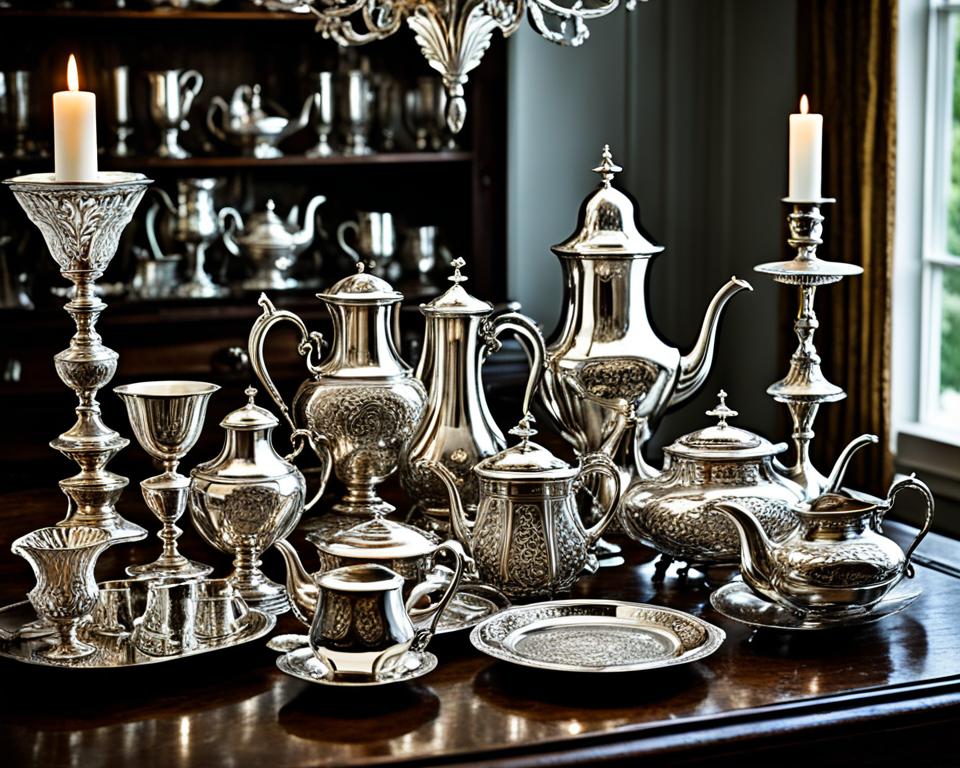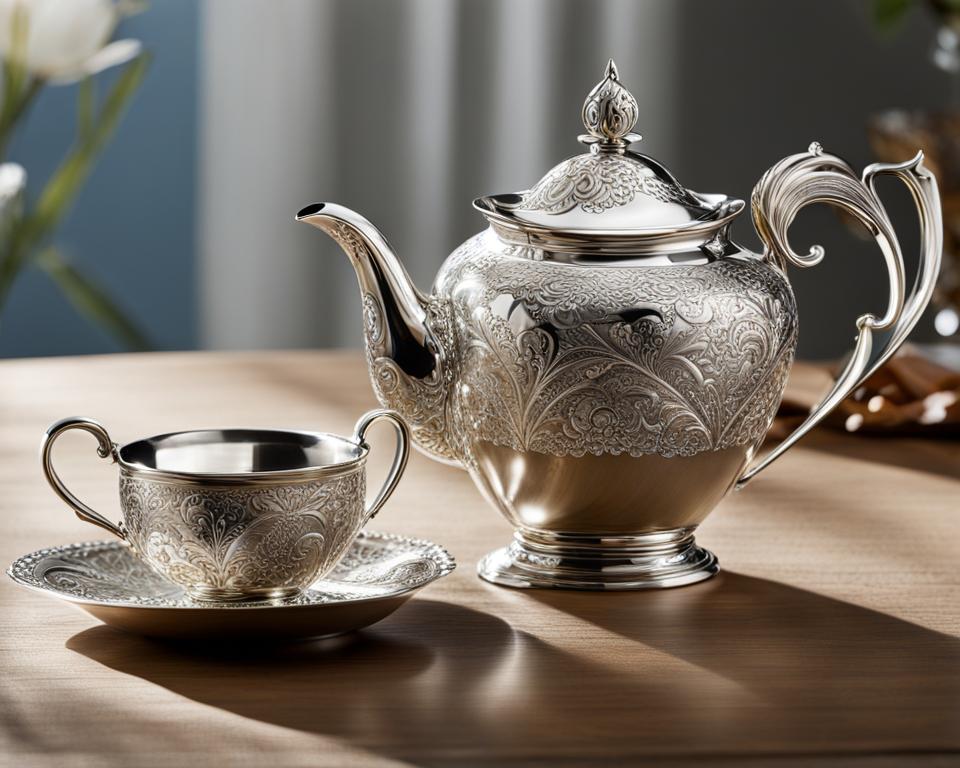Flooring is a crucial design element in any home, combining form and function. The right flooring can enhance the overall style and aesthetic of a space while also providing durability and functionality. With so many options available, it can be overwhelming to choose the best flooring for your home decor style. In this comprehensive Flooring Options Overview, we will explore the different types of flooring materials, compare their pros and cons, and provide a guide to help you make an informed decision based on your specific needs and preferences.
Key Takeaways
- Consider the different flooring materials and their pros and cons.
- Choose flooring that suits your home decor style and personal preferences.
- Take into account factors such as durability, maintenance, and budget.
- Stay updated on current flooring trends.
- Make an informed decision based on your specific needs and desired aesthetic.
Hardwood Flooring: Classic warmth and beauty
Hardwood flooring is a timeless option that adds warmth and beauty to any space. Whether you’re renovating your home or building a new one, hardwood floors can elevate the overall aesthetic and create a welcoming atmosphere. With their natural variations in color and grain patterns, hardwood floors bring a unique character to each room.
There are two main types of hardwood flooring: solid wood flooring and engineered wood flooring. Solid wood flooring is crafted from a single solid piece of wood, while engineered wood flooring consists of a thin veneer of real wood bonded to layers of plywood. Both options have their advantages and considerations.
Solid Wood Flooring
Solid wood flooring is known for its durability and longevity. It can be sanded and refinished multiple times, allowing you to refresh its appearance and extend its lifespan. With proper care, solid wood floors can last for generations, making them a valuable investment.
When it comes to species, solid wood flooring offers a wide range of options. Popular hardwood species include oak, maple, ash, and walnut, each with its unique characteristics. Whether you prefer the rich, warm tones of oak or the subtle elegance of maple, there’s a hardwood species to match your style preferences.
It’s important to note that solid wood flooring can be more expensive than other flooring options, but its timeless appeal and durability make it worth considering for long-term value.
Engineered Wood Flooring
Engineered wood flooring offers the beauty of hardwood at a more affordable price point. This type of flooring consists of a thin layer of real wood on top of plywood layers, providing stability and resistance to moisture. Its layered construction also helps to minimize the natural expansion and contraction that can occur with solid wood floors.
Engineered wood flooring is available in a wide variety of wood species and finishes, giving you ample choices to find the perfect look for your home. Whether you prefer the rustic charm of reclaimed wood or the sleek elegance of hickory, you can achieve the desired aesthetic with engineered wood flooring.
However, it’s important to note that engineered wood floors have a limited number of refinishing options compared to solid wood floors. The thin top layer of real wood can only withstand a few sandings before it is worn down, so consider this factor when choosing engineered wood flooring.
Hardwood flooring is a versatile option that suits various home decor styles, from traditional to modern and everything in between. Its warm and rich tones create a cozy and inviting ambiance, while its durability ensures that it can withstand the test of time.
Hardwood flooring is a classic choice that offers both warmth and beauty to any space.
| Hardwood Flooring | Pros | Cons |
|---|---|---|
| Solid Wood Flooring | – Durable and long-lasting – Can be sanded and refinished multiple times – Wide range of species and finishes |
– More expensive than other flooring options – Susceptible to dents, scratches, and moisture-related issues |
| Engineered Wood Flooring | – More affordable than solid wood flooring – Wide variety of species and finishes – Resistant to moisture |
– Limited refinishing options – Thinner top layer compared to solid wood flooring |
Laminate Flooring: Affordable and versatile
Laminate flooring is a budget-friendly option that provides the look of hardwood or stone at a fraction of the cost. It is made up of three layers: a high-density particleboard base, a wood or tile photo layer, and a clear plastic protective coating. Laminate flooring is designed to mimic the appearance and texture of natural materials, offering a versatile solution for various home decor styles.
This type of flooring is known for its affordability, making it an excellent choice for homeowners on a budget. Its cost-effectiveness allows you to achieve the desired aesthetic without compromising your financial goals. Additionally, laminate flooring is easy to install, making it a popular DIY project for homeowners.
Laminate Construction:
Laminate flooring consists of the following layers:
- A high-density particleboard base provides stability and support.
- A wood or tile photo layer is printed with high-definition images to replicate the look of real wood or stone.
- A clear plastic protective coating adds durability and protects the flooring from scratches and stains.
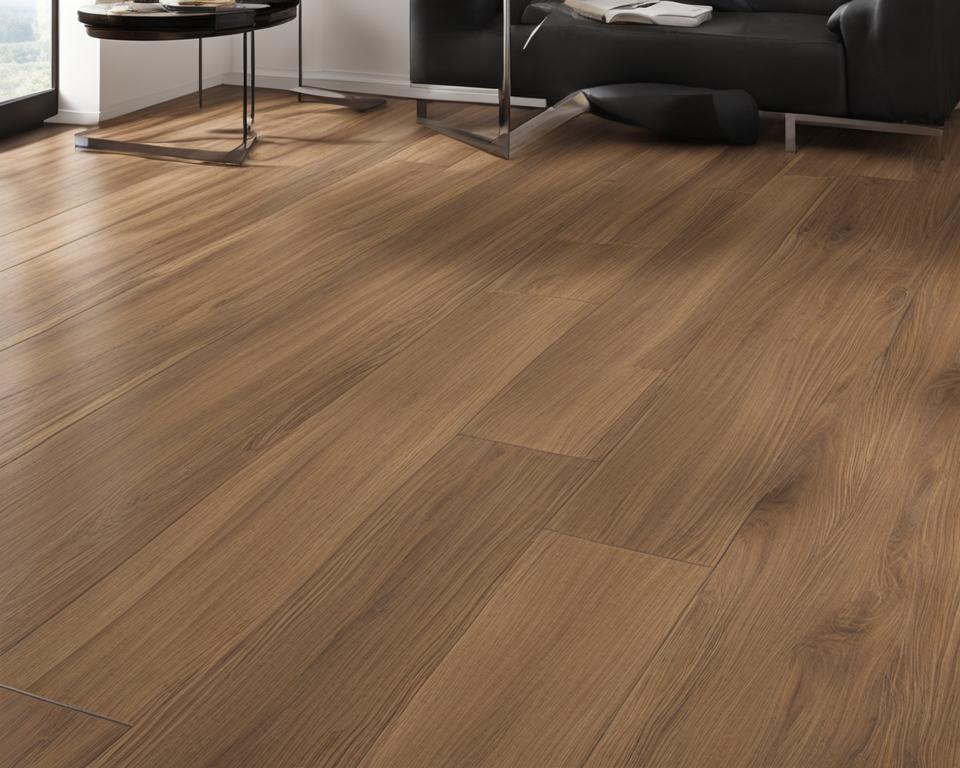
Laminate flooring offers several advantages and disadvantages to consider:
Pros of Laminate Flooring:
- Cost-effective alternative to hardwood or stone flooring
- Easy installation, making it a suitable choice for DIY projects
- Wide range of designs and colors available
- Scratch-resistant and durable, able to withstand heavy foot traffic
Cons of Laminate Flooring:
- May not have the same level of durability or authenticity as real wood or stone flooring
- Cannot be refinished like hardwood flooring
- May be susceptible to moisture damage if not properly installed or maintained
Vinyl Flooring: Durability and versatility
When it comes to flooring options, vinyl flooring stands out for its durability and versatility. Whether you’re looking for sheet vinyl, luxury vinyl tiles (LVT), or luxury vinyl planks (LVP), vinyl flooring offers a wide range of choices to suit your needs and preferences.
One of the key advantages of vinyl flooring is its durability. Designed to withstand heavy foot traffic and daily wear and tear, vinyl flooring is a resilient option that can stand up to the demands of busy households. It is resistant to stains, scratches, and dents, making it an excellent choice for areas with high moisture or high traffic.
Another benefit of vinyl flooring is its versatility. With advancements in technology, luxury vinyl tiles (LVT) and luxury vinyl planks (LVP) are now available, allowing you to achieve the look and feel of natural materials like hardwood or stone without the associated drawbacks. LVT and LVP can mimic the texture, patterns, and colors of real wood or stone, giving you endless design possibilities for your space.
Mimicking the Beauty of Real Wood
One of the standout features of luxury vinyl tiles (LVT) and luxury vinyl planks (LVP) is their ability to replicate the beauty of real wood. LVT and LVP come in a wide range of wood-like finishes, from light oak to deep mahogany, allowing you to achieve the look of hardwood flooring without the maintenance and cost associated with it.
Vinyl flooring provides the durability and versatility desired in any home decor style. LVT and LVP can mimic the warmth and elegance of natural wood, offering a cost-effective alternative for homeowners.
Easy Maintenance and Waterproof Properties
One of the advantages of vinyl flooring is its easy maintenance. Vinyl floors are easy to clean and require minimal effort to maintain their original appearance. Regular sweeping and occasional mopping with a mild cleaning solution is usually sufficient to keep vinyl flooring looking its best.
Additionally, vinyl flooring is waterproof, making it an ideal choice for areas prone to moisture, such as kitchens, bathrooms, and basements. This water resistance makes vinyl flooring highly resistant to mold, mildew, and water-related damage, ensuring its longevity in humid environments.
Potential Drawbacks
While vinyl flooring offers numerous benefits, it’s essential to consider a few potential drawbacks. Vinyl flooring may not have the same aesthetic appeal as natural materials like hardwood or stone. While LVT and LVP can closely resemble their natural counterparts, some homeowners may prefer the authenticity and unique characteristics that only real wood or stone provide.
Another consideration is the emission of volatile organic compounds (VOCs) during the installation process of vinyl flooring. VOCs are chemicals that can be released into the air, potentially impacting indoor air quality. If you’re concerned about VOC emissions, be sure to choose low VOC or zero VOC vinyl flooring options.
Overall, vinyl flooring offers a durable and versatile solution for homeowners looking for a cost-effective way to achieve the look of natural materials without the associated upkeep and expense. Whether you opt for classic sheet vinyl or choose luxury vinyl tiles (LVT) or luxury vinyl planks (LVP) to mimic the beauty of hardwood or stone, vinyl flooring is a practical choice for any home decor style.
https://www.youtube.com/watch?v=zDG-70OKFp8
Tile Flooring: Classic and durable
When it comes to flooring options, tile flooring is a popular choice for its timeless appeal and durability. Specifically, ceramic and porcelain tiles are widely used for their classic look and exceptional resilience. Ceramic tiles are made from a mixture of water and sand, while porcelain tiles are crafted from a finer, denser clay fired at a higher temperature.
One of the primary advantages of tile flooring is its waterproof nature, making it an ideal option for kitchens and bathrooms. Both ceramic and porcelain tiles are resistant to water and easy to clean, ensuring long-lasting beauty even in high-moisture areas.
Furthermore, tile flooring offers endless design possibilities. With a wide range of colors, patterns, and sizes available, you can create a unique and personalized look for your space. Whether you prefer a traditional or modern aesthetic, tile flooring can perfectly complement your style.
However, it is important to note that tile installation can be a challenging process that requires professional expertise. Additionally, without proper insulation, tile flooring can feel hard and cold underfoot. It is recommended to use insulation materials or area rugs to enhance the comfort of your tile flooring.
Carpet: Softness and comfort
Carpet is a popular choice for its softness and comfort. It provides a cozy and inviting feel underfoot, making it a perfect flooring option for bedrooms, living areas, and other spaces where comfort is a top priority.
There are various types of carpet available, including tufted and woven carpet. Tufted carpet is made by punching yarn through a backing material and then sealing it with latex, while woven carpet is created by interlacing yarns on a loom. Both types come in a wide range of colors, patterns, and textures, allowing you to choose a carpet that suits your personal style and complements your home decor.
One of the main advantages of carpet is its ability to add warmth and insulation to a space. It acts as a natural insulator, helping to reduce energy costs and create a more comfortable indoor environment. Carpet also absorbs sound, reducing noise levels and creating a quieter atmosphere in your home.
From a cost perspective, carpet is generally more affordable than hard flooring options such as hardwood or tile. This makes it an attractive choice for budget-conscious homeowners who still want to enjoy the benefits of soft and comfortable flooring.
However, it is important to consider the potential drawbacks of carpet as well. Carpet can be more difficult to clean compared to hard flooring options, as it tends to trap dust, dirt, and allergens. Regular vacuuming and periodic deep cleaning are necessary to maintain the cleanliness and hygiene of your carpet.
Additionally, carpet is more susceptible to wear and tear compared to hard flooring. Heavy foot traffic, furniture marks, and spills can cause lasting damage to the carpet fibers, resulting in a worn-out appearance over time. It may require more frequent replacement or maintenance compared to other flooring materials.
Key Points:
- Carpet provides softness and comfort underfoot, making it ideal for bedrooms and living areas.
- Tufted and woven carpet offer a wide range of colors, patterns, and textures to suit different home decor styles.
- Carpet adds warmth and insulation to a space, helping to reduce energy costs.
- Carpet absorbs sound, creating a quieter indoor environment.
- Carpet is generally more affordable than hard flooring options.
- Regular maintenance is required to keep carpet clean and free from dust, dirt, and allergens.
- Carpet may show wear and tear over time and require more frequent replacement or maintenance.
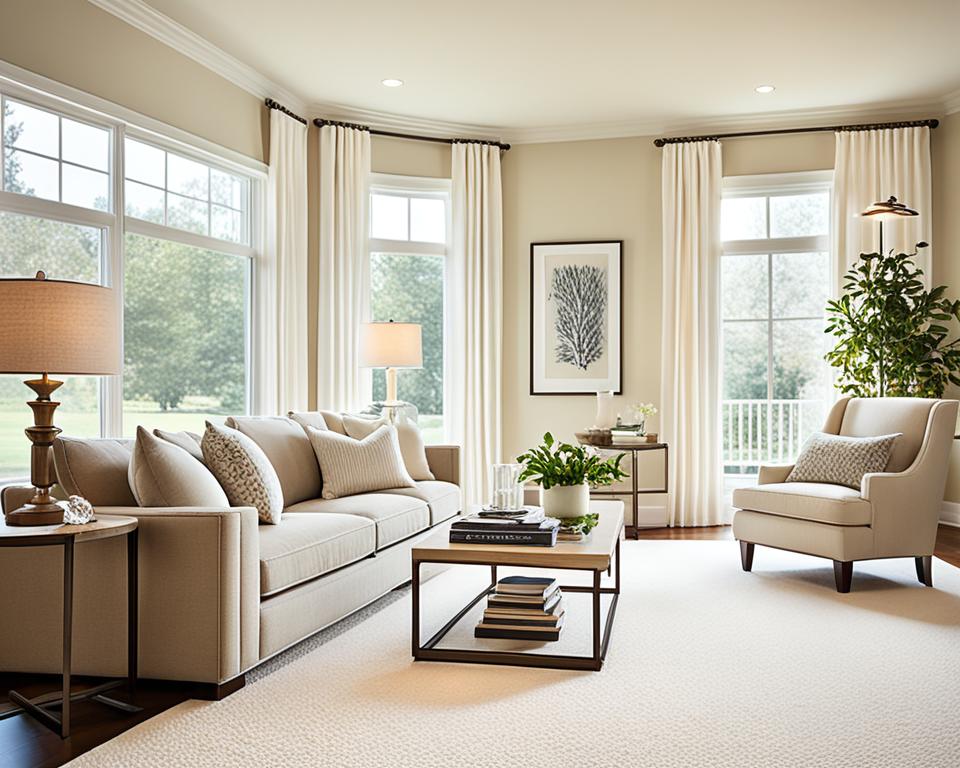
Stone Flooring: Timeless elegance
Stone flooring, including types like marble, granite, and travertine, exudes timeless elegance and adds value to a home. Natural stone floors are durable, resistant to heavy foot traffic, and can withstand fading under sunlight. Each type of stone has its unique characteristics and variations, adding character and uniqueness to a space. However, stone flooring can be expensive and requires professional installation. It may also be hard and unforgiving, and certain types of stone floors need regular sealing to resist stains.
If you’re looking to bring the beauty and sophistication of natural stone into your home, stone flooring is an excellent choice. With its durability and long-lasting appeal, it can truly transform any room. However, it’s important to consider both the pros and cons before making a decision. Take a look at the table below for a quick overview:
| Stone Flooring Pros | Stone Flooring Cons |
|---|---|
| Timeless elegance | Expensive |
| Durable and resistant to heavy foot traffic | Requires professional installation |
| Can withstand fading under sunlight | Hard and unforgiving |
| Unique characteristics and variations | Needs regular sealing to resist stains |
As you can see, stone flooring offers an array of benefits, including its timeless beauty and durability. However, it’s essential to consider the potential drawbacks, such as the initial cost and the need for professional installation. Additionally, certain types of stone floors may require regular maintenance to keep them looking their best.
Whether you choose marble, granite, travertine, or another type of natural stone, incorporating stone flooring into your home can elevate its aesthetic and create a luxurious atmosphere. Just make sure to weigh the pros and cons and select the right stone type that fits your style, budget, and maintenance preferences.
Stone floors bring natural beauty and a sense of timelessness to any space. With its durability and wide range of options, stone flooring is a popular choice for homeowners seeking elegance and sophistication. From luxurious marble to resilient granite, there’s a stone type to suit every style and preference. However, it’s important to consider the cost and maintenance requirements before making a decision. Stone flooring requires professional installation and regular sealing to preserve its beauty and resist stains. Nevertheless, the enduring charm and unique variations of natural stone make it a truly exceptional choice for those who value timeless elegance.
Cork Flooring: Eco-friendly and comfortable
Cork flooring is a popular choice for those seeking a sustainable and comfortable flooring option. Made from the bark of cork trees, this eco-friendly material offers a range of benefits for both your home and the environment.
One of the key advantages of cork flooring is its natural insulation properties. The unique cellular structure of cork traps air, providing excellent thermal and acoustic insulation. This helps to keep your home warm in the winter and cool in the summer, while also reducing noise transmission between rooms.
Additionally, cork flooring is known for its comfort underfoot. Its cushioning effect creates a softer surface compared to harder flooring materials, making it a great choice for areas where you spend a lot of time standing, such as kitchens or playrooms.
Another advantage of cork flooring is its water-resistant nature. Cork contains a substance called suberin, which acts as a natural barrier against water and moisture. This makes it an ideal option for areas prone to spills or humidity, such as kitchens, bathrooms, or basements.
Furthermore, cork flooring is durable and can withstand daily wear and tear. It is resistant to scratches, dents, and divots, making it suitable for high-traffic areas. However, it is important to note that cork flooring may darken or turn yellowish over time when exposed to direct sunlight.
To maintain the appearance and longevity of cork flooring, regular maintenance is required. This includes resealing the cork every few years to protect it from moisture damage. With proper care, cork flooring can last for many years, providing a sustainable and comfortable flooring solution for your home.
Cork Flooring Pros and Cons
| Pros | Cons |
|---|---|
| 1. Eco-friendly and sustainable | 1. Prone to discoloration when exposed to sunlight |
| 2. Natural insulation properties | 2. Requires regular maintenance and resealing |
| 3. Comfortable underfoot | 3. Limited design options |
| 4. Water-resistant | 4. May not be suitable for heavy furniture or high heels |
| 5. Durable and resistant to scratches | 5. May have a higher initial cost compared to some other flooring options |
Concrete Flooring: Modern and versatile
Concrete flooring has gained popularity for its modern and versatile aesthetic. Whether you’re aiming for a sleek, high-gloss finish or a more natural look, concrete can deliver. Its clean lines and minimalist appeal make it a perfect choice for contemporary home decor styles.
But concrete floors are more than just visually appealing. They are also extremely durable and easy to maintain, making them ideal for high-traffic areas in both residential and commercial spaces. With proper care, concrete floors can last for decades, saving you the hassle and expense of frequent replacements.
Another advantage of concrete flooring is its compatibility with radiant heating systems. By installing radiant heating pipes beneath the concrete surface, you can enjoy efficient warmth throughout the year, bringing added comfort to your space.
Like any flooring option, concrete has its pros and cons that should be considered:
- Pros: Durability, easy maintenance, modern aesthetic, compatibility with radiant heating systems
- Cons: Expensive, requires professional installation, may feel hard, regular resealing necessary to prevent stains
Concrete flooring is a versatile choice that can be customized to fit your unique style. Whether you’re going for an industrial look, a polished concrete finish, or a more rustic appeal, concrete can be transformed to suit your needs.
With its sleek and modern appearance, concrete flooring can bring a contemporary edge to any space. Whether you’re renovating your home, office, or retail space, consider the lasting appeal and versatility of concrete.
Conclusion
Choosing the right flooring for your home decor style is crucial in creating a cohesive and functional space. By considering factors such as durability, maintenance, and budget, you can make an informed decision that perfectly suits your needs and desired aesthetic.
For timeless warmth and beauty, hardwood flooring is an excellent choice. If affordability and versatility are important to you, laminate and vinyl flooring offer attractive options. If you prefer classic and durable flooring, tile is a popular choice, while carpet adds a soft and comfortable touch to your space. If you desire elegance, stone flooring is a perfect fit. For those looking for eco-friendly and modern options, cork and concrete flooring are the way to go.
By understanding the pros and cons of each flooring type, you can confidently select the best flooring for your home decor style. Whether you seek the richness of hardwood, the affordability of laminate, or the durability of tile, there is a flooring option that will meet your requirements. Take into account your personal preferences and the specific needs of each room in your home to ensure you choose the perfect flooring that will enhance your space for years to come.
FAQ
What are the best flooring options for different home decor styles?
The best flooring options for different home decor styles depend on factors such as durability, maintenance, and budget. Some popular choices include hardwood flooring, laminate flooring, vinyl flooring, tile flooring, carpet, stone flooring, cork flooring, and concrete flooring. Each option has its own pros and cons, so it’s important to consider your specific needs and aesthetic preferences when making a decision.
What is hardwood flooring?
Hardwood flooring is a timeless option that adds warmth and beauty to any space. There are two main types of hardwood flooring: solid wood flooring, which is made from a single solid piece of wood, and engineered wood flooring, which consists of a thin veneer of real wood bonded to layers of plywood. Hardwood flooring comes in a variety of species, such as oak, maple, ash, and walnut. It offers durability and can be sanded and refinished multiple times for longevity. However, hardwood flooring can be expensive and susceptible to dents, scratches, and moisture-related issues.
What is laminate flooring?
Laminate flooring is a budget-friendly option that mimics the look of hardwood or stone at a fraction of the cost. It is made of three layers: a high-density particleboard base, a wood or tile photo layer, and a clear plastic protective coating. Laminate flooring is easy to install, scratch-resistant, and comes in a variety of designs and colors. However, it may not have the same level of durability or authenticity as real wood or stone flooring, and it cannot be refinished.
What is vinyl flooring?
Vinyl flooring, also known as resilient flooring, is a popular choice for its durability and versatility. It comes in various forms, including sheet vinyl, luxury vinyl tiles (LVT), and luxury vinyl planks (LVP). Vinyl flooring is waterproof, easy to clean, and resistant to stains, scratches, and dents. LVT can even mimic the look and feel of real wood. However, vinyl flooring may not have the same aesthetic appeal as natural materials like hardwood or stone, and it may emit volatile organic compounds (VOCs) during installation.
What is tile flooring?
Tile flooring, particularly ceramic and porcelain tiles, is a popular choice for its classic look and durability. Ceramic tiles are made from a mixture of water and sand, while porcelain tiles are made from a finer, denser clay fired at a higher temperature. Both types of tile are water-resistant and easy to clean, making them ideal for kitchens and bathrooms. Tile flooring comes in a wide range of colors, patterns, and sizes, allowing for endless design possibilities. However, tile installation can be challenging, and it can feel hard and cold underfoot without proper insulation.
What is carpet?
Carpet is a popular choice for its softness and comfort. It comes in various types, such as tufted and woven carpet, and is available in a wide range of colors and patterns. Carpet adds warmth and insulation to a space, making it ideal for bedrooms and living areas. It is also an affordable option compared to other flooring materials. However, carpet can be difficult to clean and may harbor dust and allergens. It can also show wear and tear over time and may not be as durable as hard flooring options.
What is stone flooring?
Stone flooring, including types like marble, granite, and travertine, exudes timeless elegance and adds value to a home. Natural stone floors are durable, resistant to heavy foot traffic, and can withstand fading under sunlight. Each type of stone has its unique characteristics and variations, adding character and uniqueness to a space. However, stone flooring can be expensive and requires professional installation. It may also be hard and unforgiving, and certain types of stone floors need regular sealing to resist stains.
What is cork flooring?
Cork flooring is an eco-friendly option made from the bark of cork trees. It is comfortable underfoot and provides natural insulation. Cork flooring is also water-resistant, making it suitable for areas prone to moisture. It is a durable material that can withstand daily wear and tear. However, cork flooring may darken or turn yellowish when exposed to sunlight, and it requires regular maintenance, including resealing every few years, to protect it from moisture damage.
What is concrete flooring?
Concrete flooring has gained popularity for its modern and versatile aesthetic. It can be polished to achieve a sleek, high-gloss finish or left with a more natural look. Concrete floors are durable and easy to maintain, making them suitable for high-traffic areas. They are also compatible with radiant heating systems, providing efficient warmth. However, concrete flooring can be expensive and requires professional installation. It may also feel hard and may need regular resealing to prevent stains.
How do I choose the right flooring for my home decor style?
Choosing the right flooring for your home decor style is essential for creating a cohesive and functional space. It is important to consider factors such as durability, maintenance, and budget when selecting flooring materials. Hardwood flooring offers timeless warmth and beauty, while laminate and vinyl flooring provide affordability and versatility. Tile flooring is classic and durable, while carpet adds softness and comfort. Stone flooring exudes elegance, and cork and concrete flooring offer eco-friendly and modern options. By understanding the pros and cons of each flooring type, you can make an informed decision that suits your needs and desired aesthetic.

